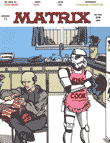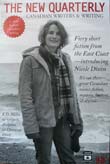Babel, Babble, Rabble, On Language and Art is my second thematic residency at The Banff Centre. Ten Years ago I attended a residency called: Telling Stories, Telling Tales. I was 22 when I applied, and had never written and artist’s statement before. Given the theme, I thought a quasi-fictional tone would be appropriate. Here’s what I sent them:
I could tell you stories. Like the time I was three, and they brought my brother home from the hospital. My uncle ran out into the driveway with an afghan over his head. I could take you to Nova Scotia and show you the afghan. My mother still has it. Then would my story be true? I could take you to North Carolina and we could ask my uncle, but I think his mind’s gone soft with drink. I don’t know, he never writes…
Then when I was five I got in trouble with my teacher for saying that Jupiter had a ring like Saturn. She told my mother I was telling stories.
These stories build and feed and build and feed upon themselves and meet up with themselves around certain corners and repeat themselves and make less and less sense.
I told the story of Chanukah about 8,000 times to the Christian school children of rural Nova Scotia. No one ever believed me.
I train language around the obstacle course of truth, fiction, image and word. I position myself between reading and writing, between pulp fiction and cultural theory. In strange twists of the body, I hold myself between the theoretical convictions of Daily Life Montreal, the rural convictions of Childhood Nova Scotia, and the critical convictions of Grandmother New York. Just today I was a storyteller, a gossip, a theoretician, a geologist and a great fan of analytical geometry.
I could tell you stories about the first time I fell in love. I performed a comedia delle arte retinue of stories, a different one each night, but she didn’t want to hear them. I tried to bake them into a cornbread, but she wouldn’t eat it. So I let the long cool silences of late September afternoons speak for me. I lay in her bed and said nothing. The text left my face and became soft and my teeth melted around her nipple. I woke up in January and realized that she had not understood a word I had not said. I told her I was running away from home, leaving for the mountains, but that I would write her a letter everyday. She laughed at me. She said I was telling stories.
. . . . .
 The week we thought Isaac the Wonder Dog was dying (see August posts) I had a massive anxiety attack about In-situ Cité. In the long hours spent sitting and waiting on the concrete floors of vets and animal clinics my whole idea of neighbourhood and community and humanity underwent some major revisions.
The week we thought Isaac the Wonder Dog was dying (see August posts) I had a massive anxiety attack about In-situ Cité. In the long hours spent sitting and waiting on the concrete floors of vets and animal clinics my whole idea of neighbourhood and community and humanity underwent some major revisions.

